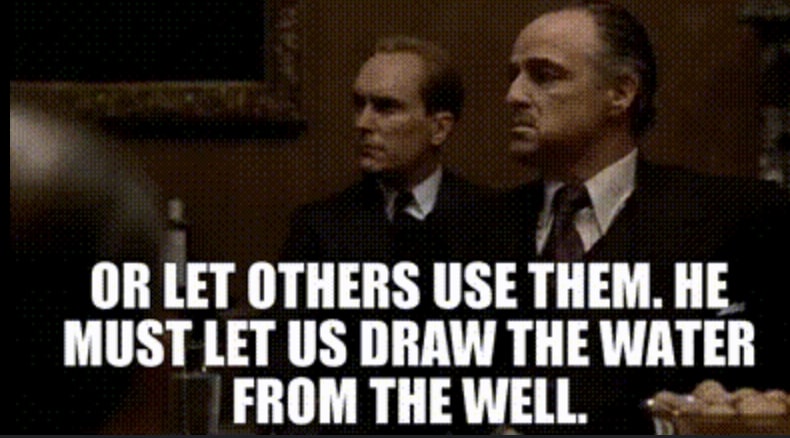Youtuber Connecting the Dots makes the case for Tesla to use Robotaxi to replace Uber. The BG2 podcast (VCs that own Uber and Tesla) suggest that it would be better for Tesla to partner with Uber. He believes Tesla could use the X (aka Twitter) user base to seed a critical mass of ridehail users for a new robotaxi application and service. He then makes the case for a city by city roboaxi service with 20,000 vehicles per city.
ARK estimates that autonomous taxis will cost consumers $0.35 cents per mile, or roughly half of the all-in cost car owners pay to drive today. This will be less than the price of Uber and Lyft today. The prices outside of North America and certain European cities is far lower. Ark Invest believes the robotaxi mobility as a service could teach $10 trillion in annual sales in the 2030s. If Ark Invest is correct then the current ridehailing and taxi market at about $300 billion is about 3% of the eventual market in revenue and 1% in total rides.
Youtuber Connecting the Dots makes the case for Tesla to attack the best major city markets with about 100,000 used Teslas that have been returned from leases. The prime markets could generate twice the revenue compared to the price of the robotaxis in the $30000 per vehicle range.
It does make sense for Tesla with or without partners to saturate a city with a critical mass of sufficient robotaxis to satisfy service demands.
Achieving the multiple trillions in annual revenue will need at least 100 million robotaxis servicing the best markets and segment. This would be about $3 trillion in capital spending. Replacing the 2 billion global cars and 30 million large trucks with a tripling of usage would need 500 million to 1 billion robotaxi. This would be $10 trillion of capital spending for half a trillion $20,000 vehicles.
The robotaxi ramp assuming it is using electric vehicles only could not go faster than 20-50% of the global electric vehicles fleet in any year. There would need to be a surge in electrical energy generation and a surge in the supercharger network. This means the capital spending for the robotaxi vehicles would also require capital spending and build out of the energy and supercharging infrastructure.
I would argue that Tesla getting to adding 10 million and then 100 million new robotaxi deployed and operating each year as fast as possible is more valuable than profit maximizing the first 100,000 to 1 million robotaxi.
Tesla will get paid for each copy of FSD either with the full profit of a car with an $8000 sale or $1200 per year from monthly subscriptions. Tesla will collect fees and a share of the business from those using the Tesla robotaxi network and app. Tesla can adjust FSD sale and subscription pricing.
Tesla also has to build out billions of Teslabots. Tesla cannot own and take all of the robotaxi and teslabot businesses. It is not politically or socially sustainable. Tesla being to greedy would cause countries like Saudi Arabia, Brazil and China to nationalize the assets and network.

Tesla must let everyone take water from the well. Certainly they will charge for such services, after all we are not communists. It is better for Tesla to welcome partners whether they are individuals or companies. Tesla can have a mix where Tesla operates its own fleet of wholly owned robotaxi vehicles alongside others in the network. Elon already said the robotaxi business will be a mix of Uber and Airbnb models.
UberX (Standard Service)
Base Fare: $1-$2.50
Per Mile: $1-$2
Per Minute: $0.10-$0.40
Booking Fee: $1.50-$3
UberXL (Larger Vehicles)
Base Fare: $2-$5
Per Mile: $1.50-$3
ARK expects traffic to increase to almost 3X today’s levels by 2030. Autonomous taxis should boost US GDP by over $2 trillion by 2035. Auto accident rates should decline by 80%.
Uber is making about $40 billion per year in annual revenue (mostly Mobility rides and about 30% Uber eats).
22% of Uber’s Gross Mobility revenue came from five major cities globally: New York, Los Angeles, Chicago, Sao Paulo, and London. 15% of Mobility bookings revenue came from airport bookings, which likely includes major hubs in cities like New York, San Francisco, and London. California and New York had the highest concentration of Uber drivers in the United States, suggesting these states were important revenue sources.
The Tesla Model 3 RWD is sold for about $31800 in China to $38900 in the USA. The Tesla Model 3 RWD long range is $42000 in the USA but qualifies for the $7500 tax credit for a $34500 price in the USA. Tesla has about 20% gross profit on the cars. This makes the cost to Tesla about $27000 in the USA and $25000 in China for the purpose of using new cars for Robotaxi.


Tesla has introduced the Model 3 Long Range RWD in the US.
• Starting price: $42,490 ($34,990 including Fed EV credit)
• EPA range: 363 miles
• 0-60mph: 4.9s
The production cost for Tesla is about

Brian Wang is a Futurist Thought Leader and a popular Science blogger with 1 million readers per month. His blog Nextbigfuture.com is ranked #1 Science News Blog. It covers many disruptive technology and trends including Space, Robotics, Artificial Intelligence, Medicine, Anti-aging Biotechnology, and Nanotechnology.
Known for identifying cutting edge technologies, he is currently a Co-Founder of a startup and fundraiser for high potential early-stage companies. He is the Head of Research for Allocations for deep technology investments and an Angel Investor at Space Angels.
A frequent speaker at corporations, he has been a TEDx speaker, a Singularity University speaker and guest at numerous interviews for radio and podcasts. He is open to public speaking and advising engagements.